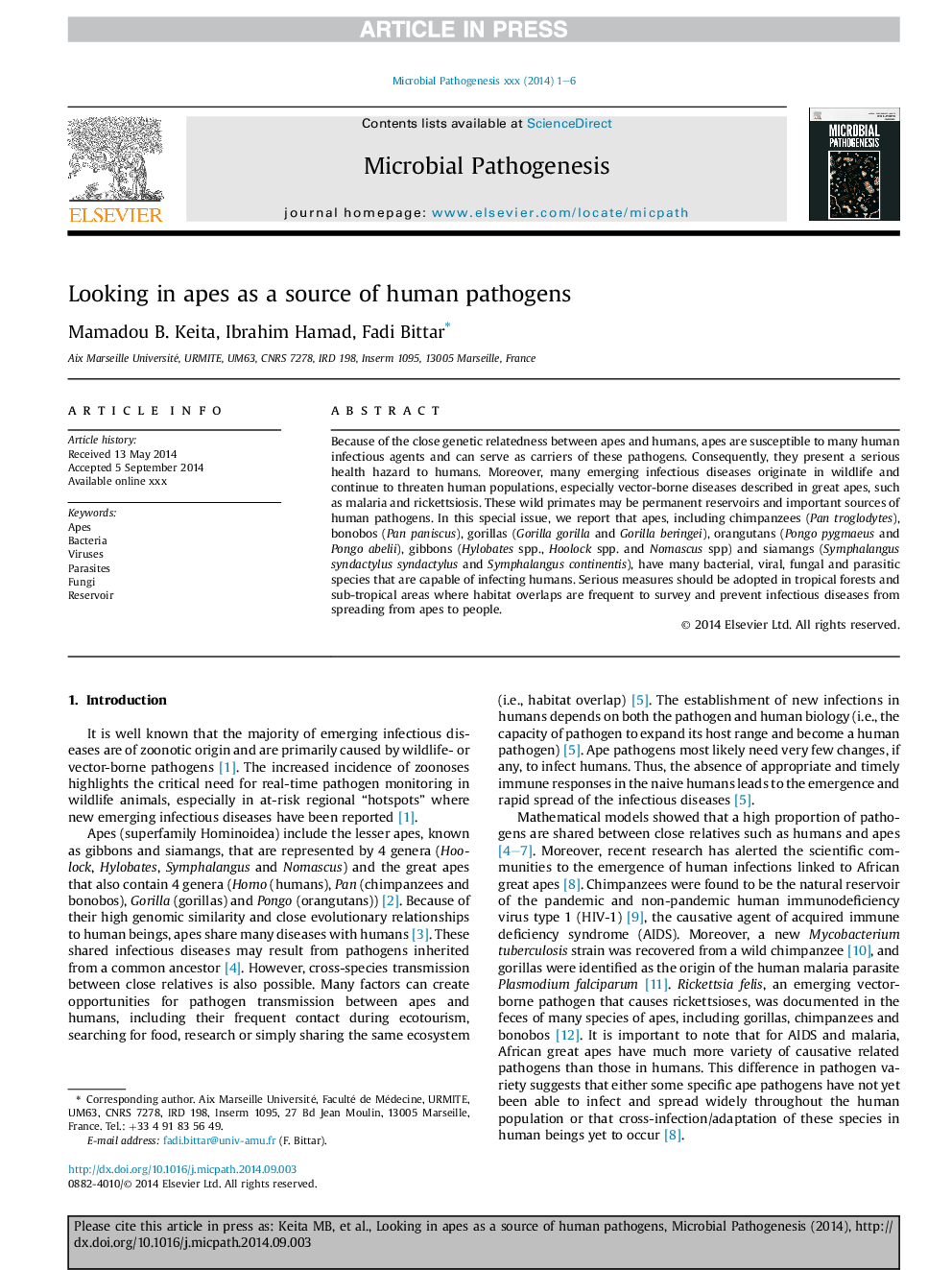| Article ID | Journal | Published Year | Pages | File Type |
|---|---|---|---|---|
| 6136247 | Microbial Pathogenesis | 2014 | 6 Pages |
Abstract
Because of the close genetic relatedness between apes and humans, apes are susceptible to many human infectious agents and can serve as carriers of these pathogens. Consequently, they present a serious health hazard to humans. Moreover, many emerging infectious diseases originate in wildlife and continue to threaten human populations, especially vector-borne diseases described in great apes, such as malaria and rickettsiosis. These wild primates may be permanent reservoirs and important sources of human pathogens. In this special issue, we report that apes, including chimpanzees (Pan troglodytes), bonobos (Pan paniscus), gorillas (Gorilla gorilla and Gorilla beringei), orangutans (Pongo pygmaeus and Pongo abelii), gibbons (Hylobates spp., Hoolock spp. and Nomascus spp) and siamangs (Symphalangus syndactylus syndactylus and Symphalangus continentis), have many bacterial, viral, fungal and parasitic species that are capable of infecting humans. Serious measures should be adopted in tropical forests and sub-tropical areas where habitat overlaps are frequent to survey and prevent infectious diseases from spreading from apes to people.
Related Topics
Life Sciences
Immunology and Microbiology
Microbiology
Authors
Mamadou B. Keita, Ibrahim Hamad, Fadi Bittar,
